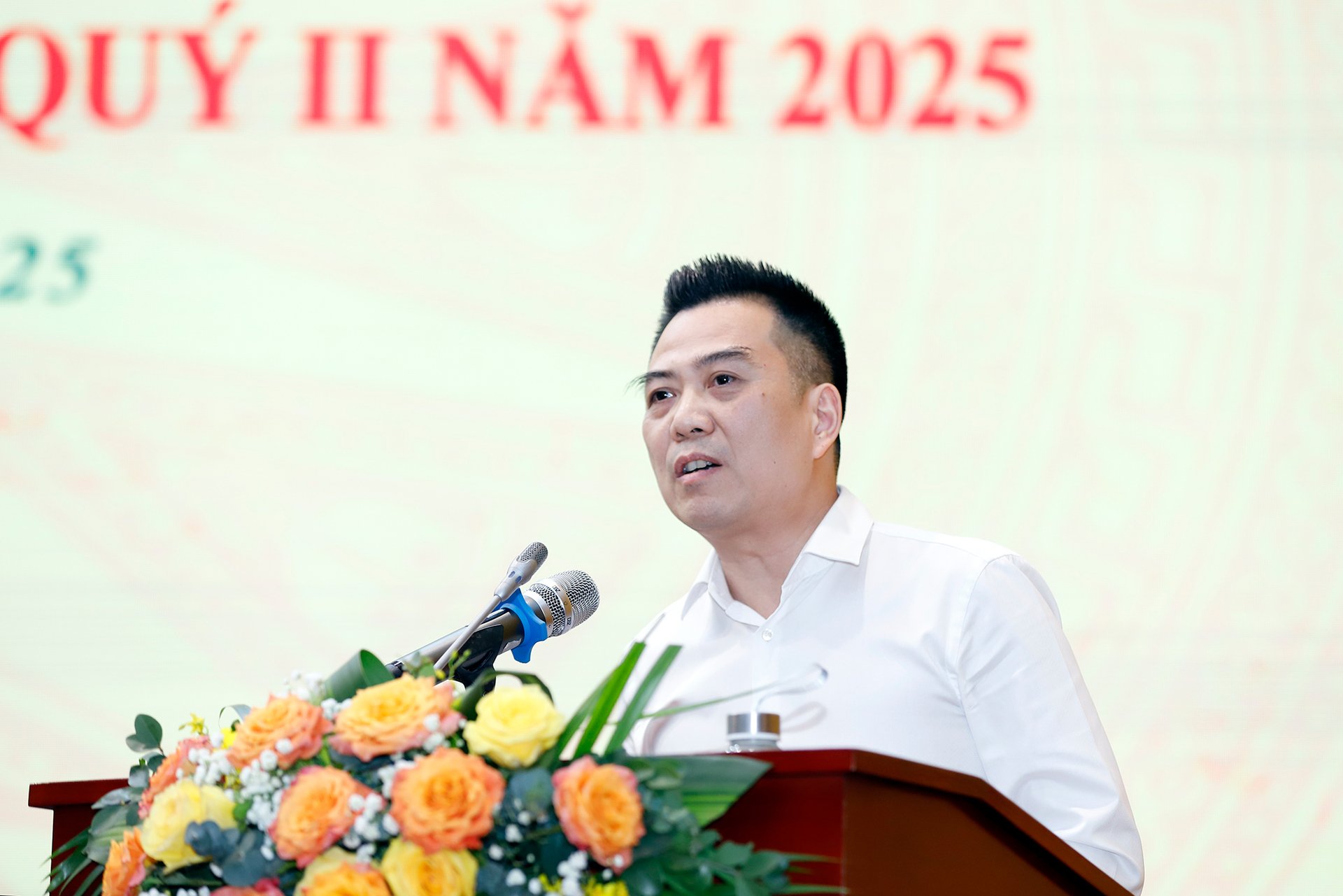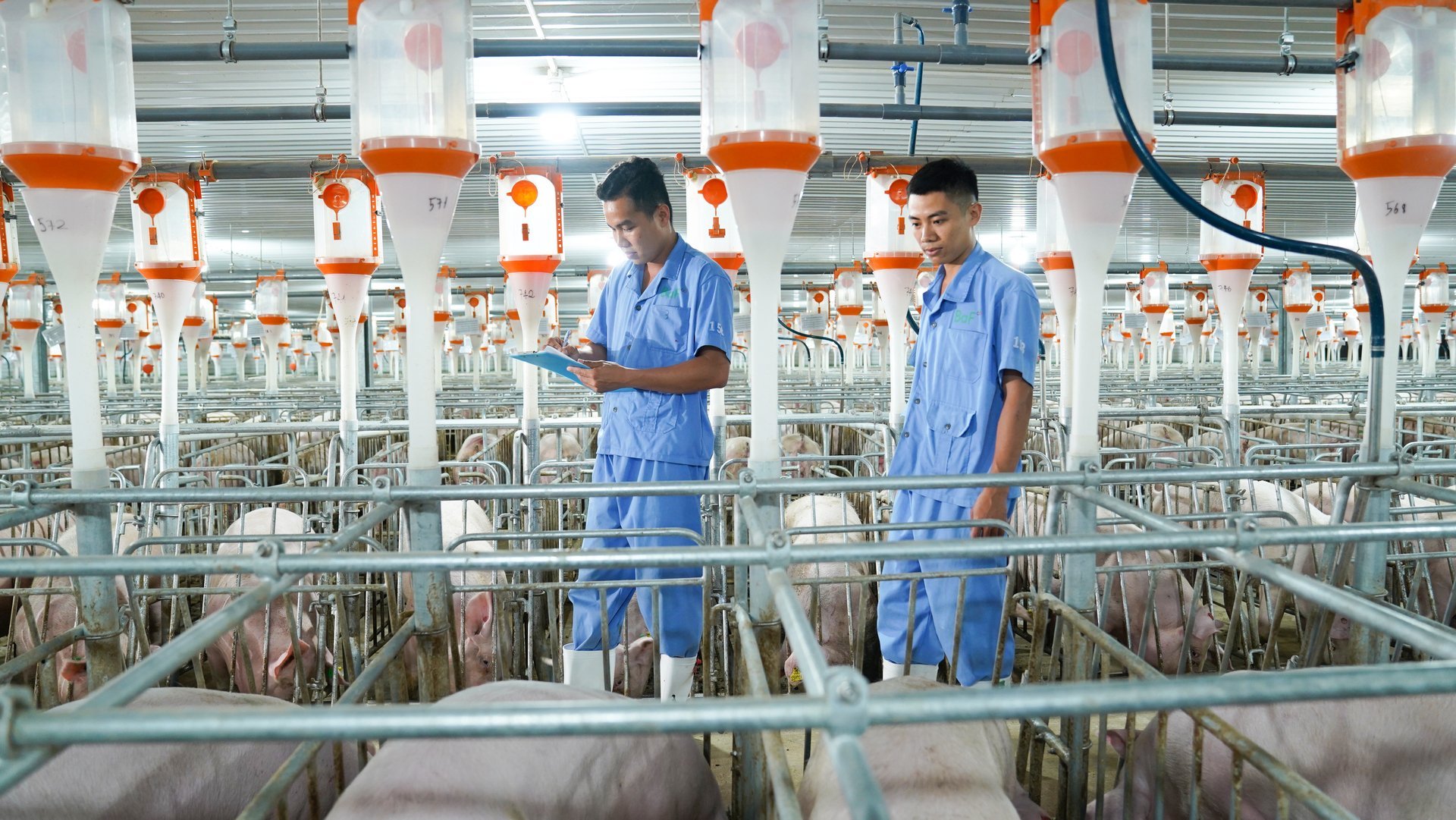November 27, 2025 | 10:34 GMT +7
November 27, 2025 | 10:34 GMT +7
Hotline: 0913.378.918
November 27, 2025 | 10:34 GMT +7
Hotline: 0913.378.918
Dang Ngoc Diep, General Director of the Department of Planning and Finance, informed at the Ministry of Agriculture and Environment's first quarter review and planning conference, that the agriculture and environment sector achieved numerous positive results, despite the implementation of organizational mergers and staffing adjustments.
In the first quarter of 2025, the value-added growth rate of agriculture, forestry, and fisheries was 3.74% year-on-year. Agriculture experienced a 3.53% increase, forestry experienced a 6.67% increase, and fisheries experienced a 3.98% increase.

Mr. Dang Ngoc Diep, General Director of the Department of Planning and Finance (MAE), said that the market continues to be a major priority in the second quarter of 2025. Photo: Khuong Trung.
A total of nearly 2.95 million hectares of winter-spring rice were cultivated across the country. The total output for this season amounted to 9.9 million tons, a 10% increase from the same period last year, as a result of the Mekong Delta's increased harvests.
In most fruit commodities, output increased as a result of increased yields and an expanded productive area. Furthermore, the addition of higher selling prices for industrial crops resulted in a higher value for perennial crops in the sector.
The production of main fruits, such as durian (up 16.8%), banana (5.6%), mango (5.3%), pomelo (2.5%), and dragon fruit (2.1%), experienced a significant increase in Q1/2025.
Livestock production remained stable, with continued growth in pig and poultry herds, although buffalo and cattle herds saw a slight decline due to limited economic returns. The total meat output increased by 4.6% to 2.15 million tons. In the 21-day monitoring interval, there were only 22 outbreaks of African swine fever and 8 cases of lumpy skin disease in localities by the end of March, as disease control efforts were amplified.
Aquaculture experienced a 5.1% increase in output, as the total production of fisheries approached 2 million tons. It is important to note that pangasius and shrimp, which are two critical export products, experienced increases of 5.1% and 5.5%, respectively.
The forestry sector experienced substantial growth, with the volume of harvested timber surpassing 4.3 million m³ (up 16.6%), the number of newly planted forests exceeding 49,000 hectares (up 12.6%), and the collection of VND 836 billion from forest environmental services (up 9.1%).
The total export turnover of agro-forestry-fishery products in Q1 was USD 15.72 billion, representing a 13.1% increase from the previous year. Agricultural products, forestry products, fisheries, livestock products, and agricultural inputs comprised USD 8.53 billion (up 12.2%), USD 4.21 billion (up 11.2%), USD 2.29 billion (up 18.1%), and USD 549.5 million (up 19.6%) of this total. Diep reported that the trade surplus in Q1/2025 remained relatively robust at roughly USD 4.4 billion.
The value of exports to all main regions experienced a substantial increase. More specifically, exports to the Americas increased by 15.7% to USD 3.53 billion, while those to Europe increased by 37.8% to USD 2.61 billion, Africa by 105.1% to USD 496 million, Asia by 2% to USD 6.61 billion, and Oceania by 0.8% to USD 197 million. In terms of total exports, the United States, China, and Japan continued to be the three largest export markets, with respective contributions of 20.2%, 17.3%, and 7.7%.
The Ministry ensured that 100% of large reservoirs were under supervision by maintaining online monitoring of significant hydropower reservoirs in water resources management. The minimum downstream flow levels for 761 dams and reservoirs that are part of 674 irrigation works were announced.
Regarding environmental affairs, the Ministry submitted a draft Decision to the Prime Minister to issue the national hazardous waste incident response regulations. It is also in the process of revising and completing the legal framework that governs environmental management.
Diep acknowledged that, despite these accomplishments, numerous challenges persist. The primary reason for the increase in rice output was the expansion of the agricultural area. There are still potential risks associated with the control of plant and animal diseases. The prices of certain export commodities have decreased as a result of the increased global supply. Additionally, several countries have implemented stricter import standards and inspection frequencies for agricultural products. The United States has also announced reciprocal tariffs on imports from several countries, including Vietnam.
The agriculture and environment sector is committed to maintaining its alignment with the overall development objectives and enhancing production as it enters the second quarter of 2025.
To inform seasonal planning and agricultural structure, crop production will closely monitor weather and hydrological conditions, as per Dang Ngoc Diep. Crop restructuring on rice land and the monitoring of key fruit outputs for export, including dragon fruit, longan, mango, rambutan, and durian, will be the primary focus of specific production plans. The sector will also coordinate the staggered harvest of critical commodities to align with market demand, with the objective of achieving high selling prices and economic efficiency. The "One million hectares of high-quality, low-emission rice in the Mekong Delta" project will continue in its implementation.

In livestock farming, the key task is to control diseases and promote biosecurity and disease safety in livestock farming. Photo: BAF.
Disease control remains the primary concern in livestock, as it is essential for the protection of animal health and biosecurity. Additionally, authorities will closely monitor the prices and supply of feed ingredients, taking prompt action to prevent abrupt price increases.
The fisheries sector will prioritize the development of marine farming with increased commercial value and sustainability, as well as the expansion of aquaculture of high-value species. The authorities will enhance their oversight of IUU fishing and prevent illicit operations in foreign waters.
Market expansion remains a significant objective. In an effort to facilitate the export of agro-forestry-fishery products to significant markets such as the U.S., China, Japan, and the EU, the Ministry will resolve trade issues. Additionally, the Ministry will explore new, high-potential markets, including the Middle East, Africa, and Halal countries. It will leverage FTAs, particularly the CPTPP and EVFTA, to boost exports and support businesses in securing new orders.
The Ministry will conduct continuous monitoring of weather, water resources, and saltwater intrusion in the context of irrigation and disaster preparedness. It will also maintain 24/7 response operations to support local authorities and individuals in the preparation and recovery process. We will offer guidance on the strengthening of field bunds and the storage of water in irrigation systems to reduce water loss.
The Ministry will continue to enhance the legal frameworks in agriculture and environmental management, promoting awareness of new regulations to guarantee effective enforcement, with respect to natural resources and the environment. The main goals will be to enhance environmental quality, prevent resource degradation, and regulate pollution, thereby supporting the conservation of biodiversity and the achievement of national goals for sustainable growth.
Translated by Linh Linh

(VAN) As floodwaters recede, a vast network of irrigation works across eastern Gia Lai is emerging in a state of severe disrepair, with extensive damage demanding urgent restoration ahead of the 2025-2026 winter-spring cropping season.

(VAN) The conference reviewing three years of implementing Decision 911 identified the need to prioritize improving marine environmental quality and promoting sustainable fisheries development.

(VAN) Le Hoai Trung, Member of the Communist Party of Vietnam Central Committee and Minister of Foreign Affairs, held talks with Vi Thao, Chairman of the Guangxi Zhuang Autonomous Region (China) this week.

(VAN) The Mekong River Commission adopts the 2026 - 2030 Strategic Plan with a people-centered approach.
/2025/11/26/1720-1-200855_132.jpg)
(VAN) Viet Nam and Japan have many conditions to expand cooperation on climate change adaptation, particularly in disaster risk management based on advanced technologies.

(VAN) The strong development of digital technology and artificial intelligence is opening up opportunities to transform science and technology into a 'Magic eye' for disaster forecasting and early warning.

Applying vaccines and proactive disease prevention helps pig herds stay healthy, maintain productivity, reduce risks, and decrease reliance on antibiotics in modern livestock farming.